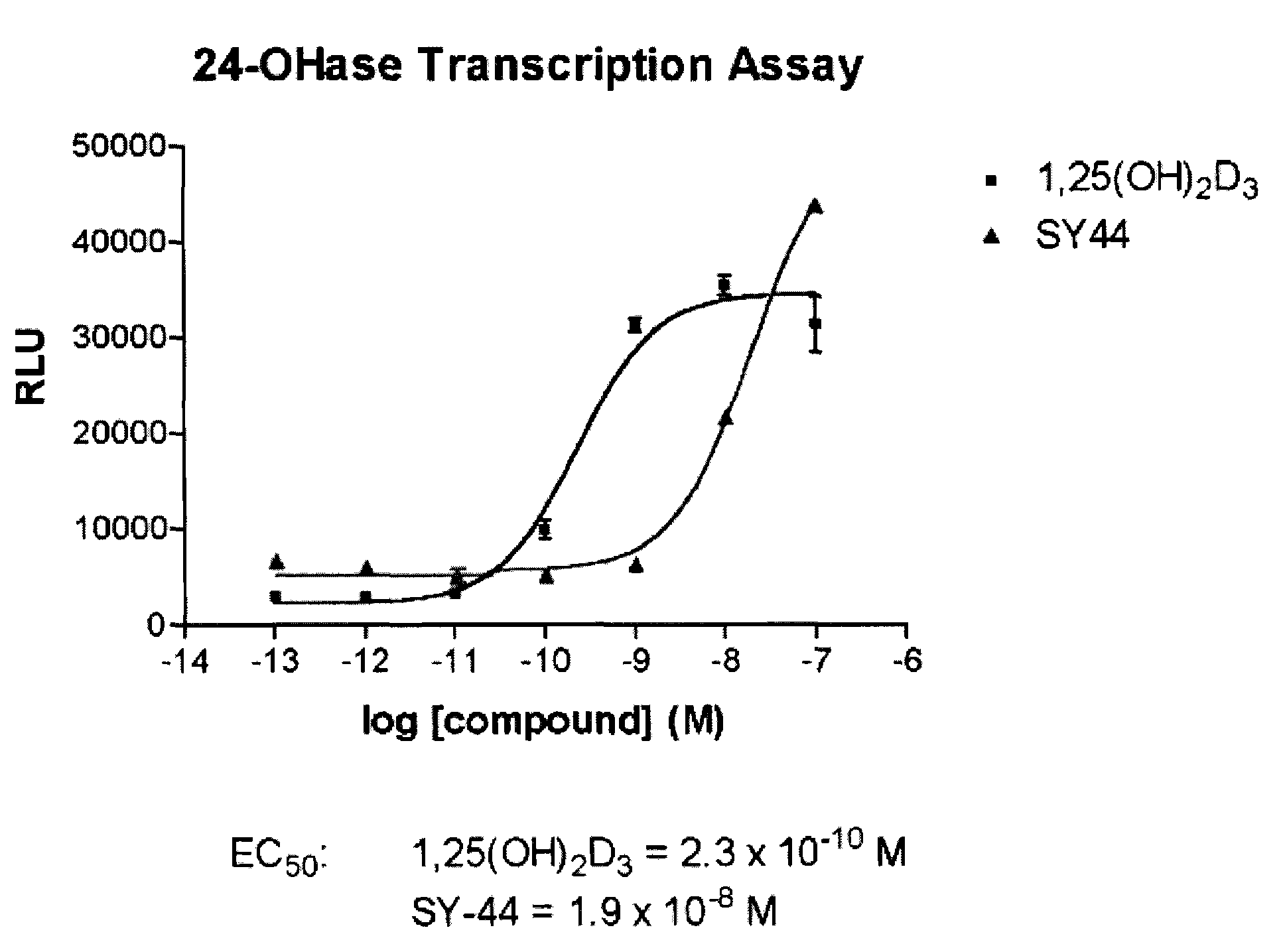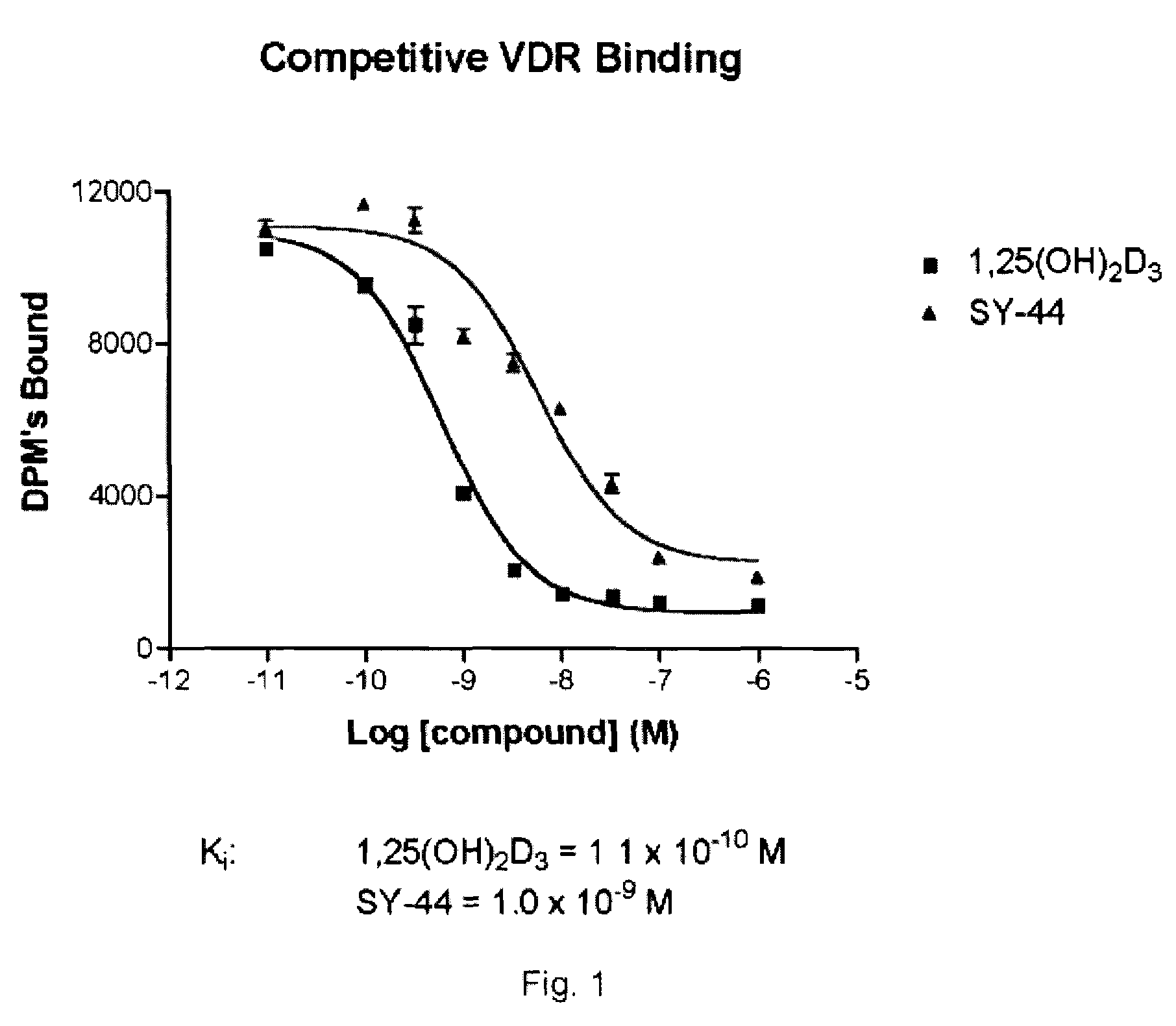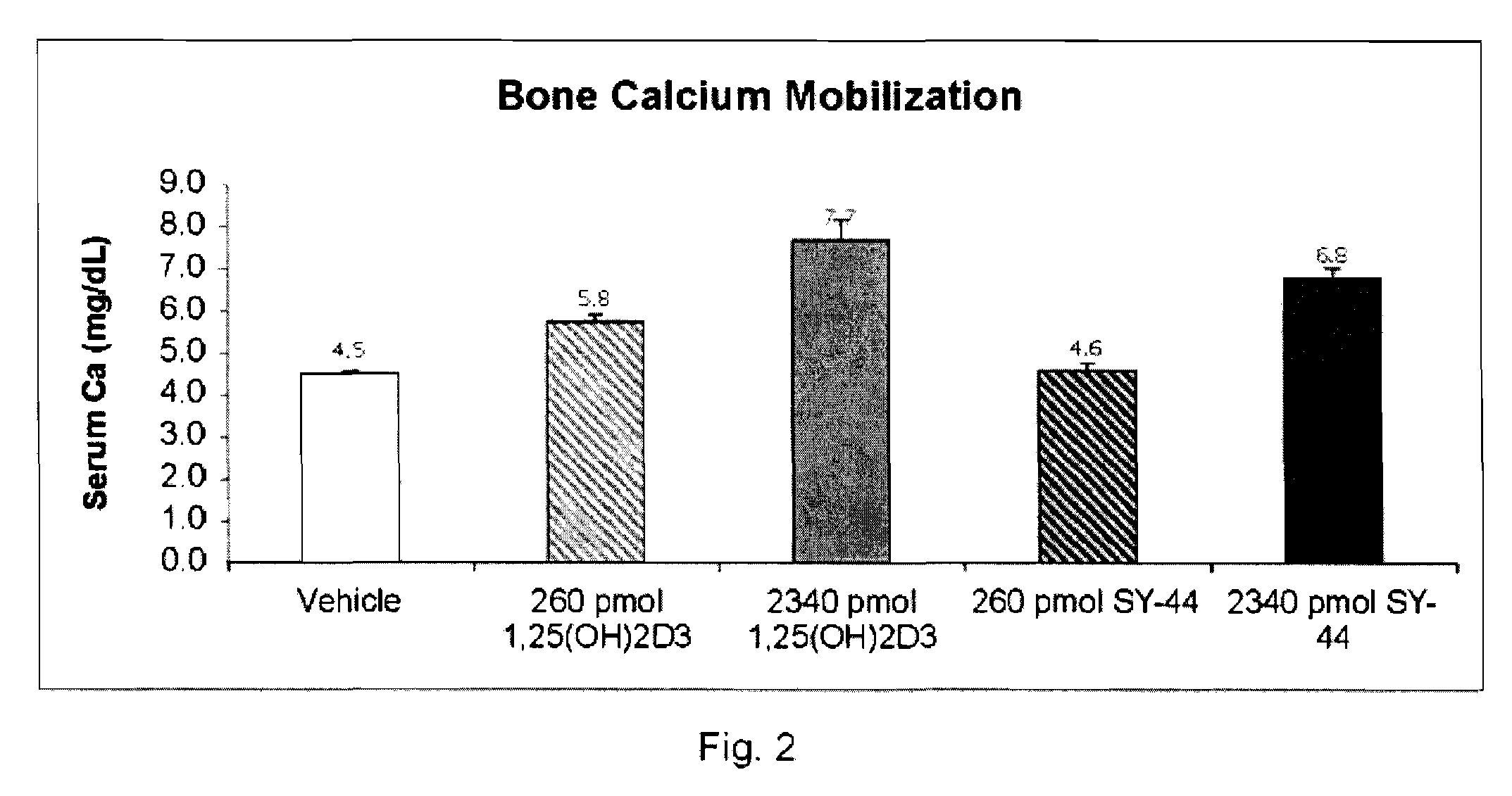2-methylene-1alpha-hydroxy-19,21-dinorvitamin D3 analogs and uses thereof
a technology of 21-dinorvitamin d3 and 2methylene-1alpha-hydroxy19, which is applied in the field of vitamin d compounds, can solve the problems of reducing the activity of methylene-1alpha-hydroxy19, slowing down bone growth, and renal osteodystrophy, and achieves low bone turnover and lack of adequate dermal hydration
- Summary
- Abstract
- Description
- Claims
- Application Information
AI Technical Summary
Benefits of technology
Problems solved by technology
Method used
Image
Examples
example i
SY-44 Synthesis
Des-A,B-23,24-dinorcholane-8β,22-diol (1)
[0069]A solution of vitamin D2 (5 g; 12.7 mmol) in methanol (400 mL) and pyridine (5 mL) was cooled to −78° C. while purging with argon. The argon stream was stopped and stream of ozone was passed until blue color appeared. The solution was purged with oxygen until blue color disappeared and treated with NaBH4 (1.2 g; 32 mmol). After 20 min. the second portion of NaBH4 (1.2 g; 32 mmol) was added and reaction was allowed to warm to room temperature. The third portion of NaBH4 (1.2 g; 32 mmol) was added and reaction mixture was stirred at room temperature overnight. The reaction was quenched with 70 mL of water and concentrated under vacuum. The residue was extracted with methylene chloride (3×100 mL). The organic phase was washed with 1M aqueous solution of HCl (2×100 mL), saturated aqueous solution of NaHCO3 (100 mL), dried over anhydrous MgSO4 and concentrated under vacuum. The residue was purified by flash chromatography (25%...
example ii
[0087](A) Vitamin D Receptor Binding
[0088]Test Material
[0089]Protein Source
[0090]Full-length recombinant rat receptor was expressed in E. coli BL21 (DE3) Codon Plus RIL cells and purified to homogeneity using two different column chromatography systems. The first system was a nickel affinity resin that utilizes the C-terminal histidine tag on this protein. The protein that was eluted from this resin was further purified using ion exchange chromatography (S-Sepharose Fast Flow). Aliquots of the purified protein were quick frozen in liquid nitrogen and stored at −80° C. until use. For use in binding assays, the protein was diluted in TEDK50 (50 mM Tris, 1.5 mM EDTA, pH7.4, 5 mM DTT, 150 mM KCl) with 0.1% Chaps detergent. The receptor protein and ligand concentration was optimized such that no more than 20% of the added radiolabeled ligand was bound to the receptor.
[0091]Study Drugs
[0092]Unlabeled ligands were dissolved in ethanol and the concentrations determined us...
PUM
| Property | Measurement | Unit |
|---|---|---|
| temperature | aaaaa | aaaaa |
| particle size | aaaaa | aaaaa |
| mass | aaaaa | aaaaa |
Abstract
Description
Claims
Application Information
 Login to View More
Login to View More - R&D
- Intellectual Property
- Life Sciences
- Materials
- Tech Scout
- Unparalleled Data Quality
- Higher Quality Content
- 60% Fewer Hallucinations
Browse by: Latest US Patents, China's latest patents, Technical Efficacy Thesaurus, Application Domain, Technology Topic, Popular Technical Reports.
© 2025 PatSnap. All rights reserved.Legal|Privacy policy|Modern Slavery Act Transparency Statement|Sitemap|About US| Contact US: help@patsnap.com



